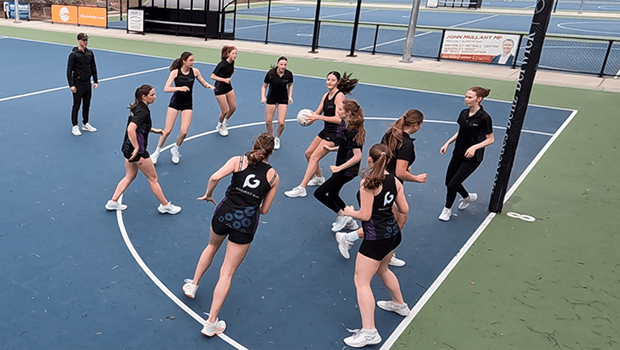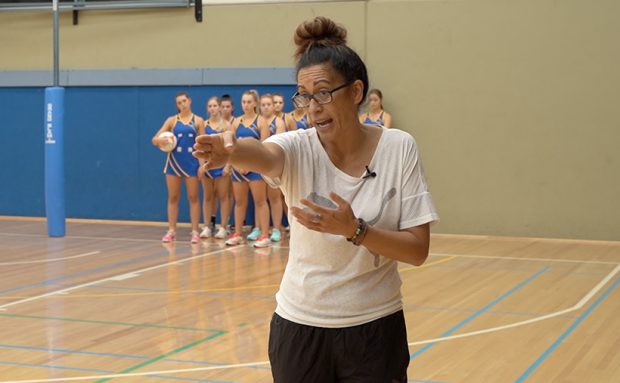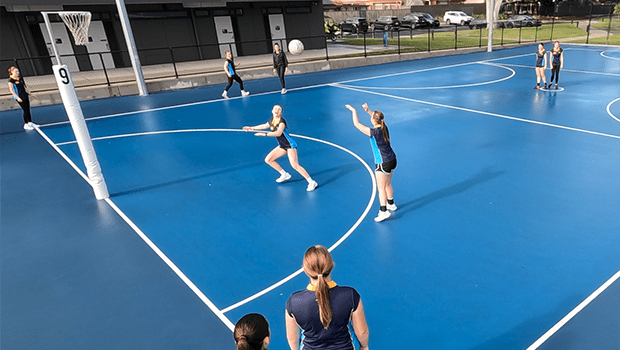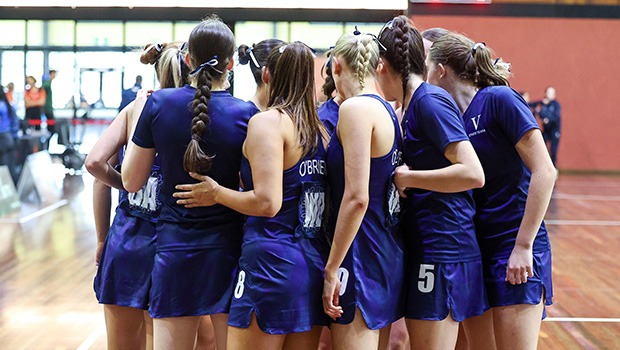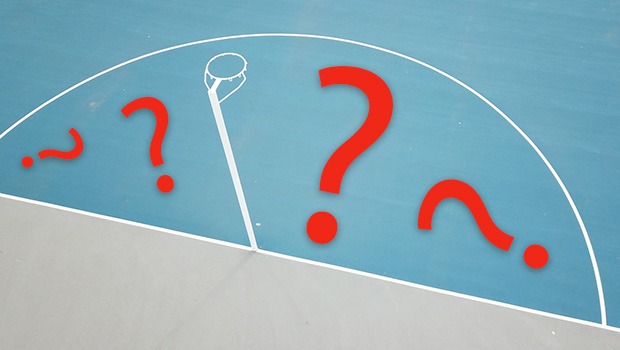With 14 players and such limited space on court, timing is everything in netball.
Move or drive early and your players will find themselves running out of room near the sideline. Drive too late and the opposition will have them covered, or their teammate will be looking for other options.
Getting that timing right can the difference between a slick, quick, well-oiled transition from defence into attack and a goaler popping out at just the right time, or a stuttering passage of play that ends with players under pressure and an inevitable turnover.
So here is a series of drills you can use to target your team’s timing, and get them connecting seamlessly down the court.
MEMBERS: ADD THIS SESSION TO YOUR SESSION PLANNER!
1. THE MILKSHAKE
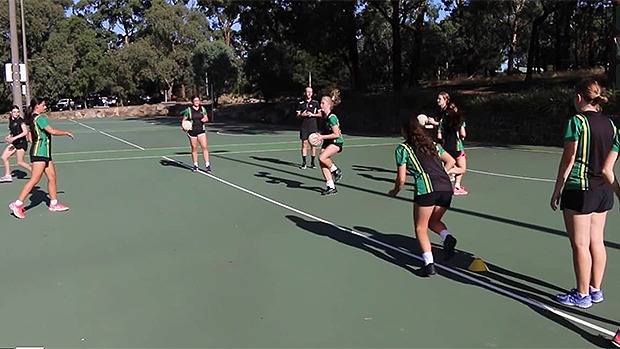
This drill can be a great one for warm-ups and for getting into the swing of the ‘timing’ theme, as it asks players to drive hard for the ball when it’s their turn, but clear out and wait when it’s not.
Players will quickly be able to identify if they’re too early, as they’ll be in someone else’s way or will find themselves having to slow down to receive the ball.
2. LINE TIMING or CONE TIMING
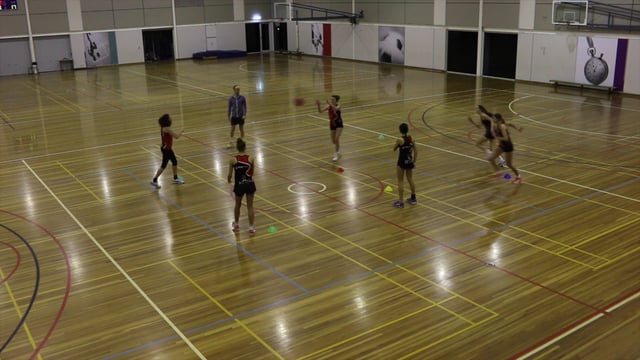
Both of these drills introduce a preliminary move as the ball moves down/around the court, forcing players to start thinking about preparing their space earlier, rather than waiting for the ball to arrive before moving.
These drills are fantastic for helping players to identify when they’re moving too early or too late. If they’re slowing down towards the line/cone, they’re clearly too early, but if the thrower is ready to release the ball and they haven’t completed their preliminary move, they’re moving too late.
3. SPLIT AND RE-OFFER or SPLIT AND PICK
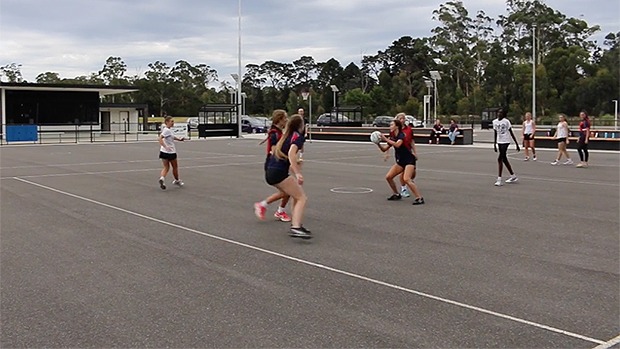
Now let’s get players working on their timing in pairs or units.
The “Split and re-offer” drill is an oldie but a goodie, while “Split and pick” also forces the thrower to make a good decision with the ball, based on who is free to receive.
In both drills, watch out for your players starting to split wide too early – they need to read off the ball carrier who’s bringing the ball to them. If you’re finding the ball is often being passed sideways rather than forwards, chances are your players are leading too early.
Both drills can include preliminary moves, and both have applications to transitions out of defence, as well as centre passes!
4. BOXED UP WA FULL COURT LINK or THE FILL DRILL
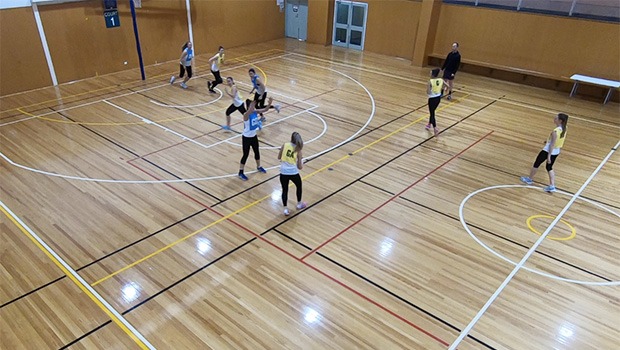
Ready to start linking defence into attack with good timing? Both of these drills are a good next step as they have easy applications for putting them out on court in matchplay.
The “Boxed-up WA full court link” drill is aimed at your WA or GA reading the play up the court, and getting the timing of their preliminary moves spot on, in order to be ready to receive the ball around the attacking transverse line once it arrives out of defence.
In “The fill drill”, you’ll build on the “Split and reoffer” drill, adding a drive from another player further down the court, who must wait and see when the space opens up, and THEN make their drive at just the right moment.
Again – too early and they’ll be in their teammate’s space, but too late and the chance to pass to them will have disappeared.
Best of luck with your sessions! Let us know how you go!
HAVEN’T SIGNED UP? JOIN NOW TO ACCESS MORE THAN 400 DRILL VIDEOS WITH LIVE INSTRUCTION!
